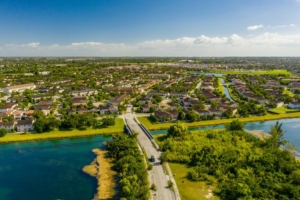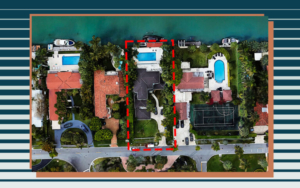Breakthrough in Florida's Affordable Housing Crisis: Forest Cove Project Advances
Florida's Gulf Coast is poised to welcome a transformative affordable housing development that could serve as a blueprint for addressing the state's ongoing housing challenges. Manatee County commissioners have greenlit a crucial $5.6 million loan to One Stop Housing, propelling forward an innovative 155-unit residential project that combines community resources with employer partnerships.
A Community-Centered Housing Solution
The Forest Cove property at 1478 45th Ave. Circle W. in Bradenton currently hosts 36 affordable apartment units, but that footprint is about to expand dramatically. What sets this development apart is its collaborative approach to funding: 12 local employers are collectively contributing $300,000 toward the project, demonstrating a vested interest in securing stable housing for their workforce.
"This is going to be an amazing project in the right location," noted Manatee County Commissioner George Kruse. "This is truly an effort to provide what the community needs."
The participating businesses—including Oysters Rock Hospitality, Cirrus Aviation, Goodwill Manasota, Spirit Movers, and Saint Stephen's—represent diverse sectors of the local economy that have been increasingly impacted by the region's housing affordability crisis.
Comprehensive Design Meets Modern Affordability Benchmarks
The expanded Forest Cove complex will feature two four-story buildings with a thoughtfully designed mix of living spaces, ranging from efficient studios to family-friendly three-bedroom apartments. Monthly rent structures reflect One Stop Housing's commitment to keeping housing costs at or below 30% of residents' income—widely considered the benchmark for financial sustainability.
| Unit Type | Estimated Monthly Rent |
| Studio | $926 |
| 1-Bedroom | $1,380 |
| 2-Bedroom | $1,700 |
Beyond affordable rent structures, the development will offer amenities that address holistic community needs:
- On-site daycare center
- Modern playground facilities
- Dedicated dog park
- Swimming pool
- Community clubhouse
- Outdoor barbecue and gathering areas
- Telehealth center for convenient medical access
Economic Impact and Workforce Stabilization
Sharon Hillstrom, president and CEO of the Bradenton Area Economic Development Corporation, has been vocal about the economic imperative behind such developments. "We've got to do something," Hillstrom emphasized in December, highlighting how businesses throughout the region are struggling with workforce recruitment and retention directly tied to housing availability.
The Bradenton Area Economic Development Corporation's partnership with One Stop Housing represents a strategic alliance between economic development and housing sectors that experts suggest could become more common as communities grapple with workforce housing challenges.
Mark Vengroff, CEO and managing partner of One Stop Housing, points to a concerning trend: "Skyrocketing rent has made it much harder for workers to save for home ownership." This development aims to create a more stable financial foundation for residents, potentially restoring pathways to eventual homeownership that many Florida workers have seen disappear in recent years.
Innovative Financing Approach
The $28 million project leverages multiple funding streams in an approach that housing advocates are watching closely. The financial structure includes:
- $5.6 million catalytic loan from Manatee County
- $300,000 in combined contributions from local employer partners
- Traditional bank financing
The county's loan represents a particular type of impact investment known as a "catalytic loan," which offers more favorable terms than conventional financing. According to the MacArthur Foundation, these financial instruments are increasingly deployed in affordable housing projects to bridge funding gaps that might otherwise make development financially unfeasible.
The specific terms of Manatee County's loan include a 20-year repayment period following construction completion, with a fixed interest rate of 1.75% or half of the applicable federal rate, whichever is greater. As of February, this calculation would set the rate at approximately 2.26%.
The loan agreement includes accountability measures: if One Stop Housing sells the property or fails to complete development and begin operations within five years of closing, the full loan amount becomes immediately due.
Future Implications for Florida's Housing Landscape
The Forest Cove expansion represents more than just additional housing units—it demonstrates an evolving model that could help address Florida's persistent affordable housing shortage. By creating direct connections between employers and housing providers, communities may be able to bypass some of the market forces that have driven housing costs beyond the reach of essential workers.
Housing experts note that employer-assisted housing programs have shown promise in other high-cost regions across the country, though Florida's implementation has unique characteristics tailored to the state's specific economic and demographic profile.
Insights About Affordable Housing Solutions
How does employer participation benefit the housing project?
Employer contributions not only provide direct funding but also create a stakeholder relationship that can help ensure the development meets workforce needs. This approach helps align housing development with actual employment centers and salary levels in the community.
Why are catalytic loans significant for affordable housing?
Catalytic loans bridge the financial gap that often prevents affordable housing from being economically viable for developers. These specialized loans typically offer lower interest rates and more flexible terms than market-rate financing, essentially providing a subsidy that makes below-market rents possible.
What happens if housing costs remain above 30% of income for workers?
When housing costs exceed 30% of household income, families often make difficult trade-offs between housing, healthcare, education, and nutrition. This financial stress directly impacts workforce stability, with employees frequently leaving jobs for areas with more affordable housing options, creating costly turnover for employers.
How might this model be replicated in other Florida communities?
Other municipalities could adapt this approach by establishing dedicated funding for catalytic loans, creating incentives for employer participation, and streamlining approval processes for developments that meet specific affordability benchmarks. The key innovation is connecting employment centers directly with housing solutions.
What role does public transportation play in affordable housing effectiveness?
Accessible public transportation significantly enhances the value of affordable housing by reducing transportation costs, which are typically the second-largest household expense. Future developments might benefit from proximity to transit corridors or incorporating transportation solutions into the overall housing strategy.












